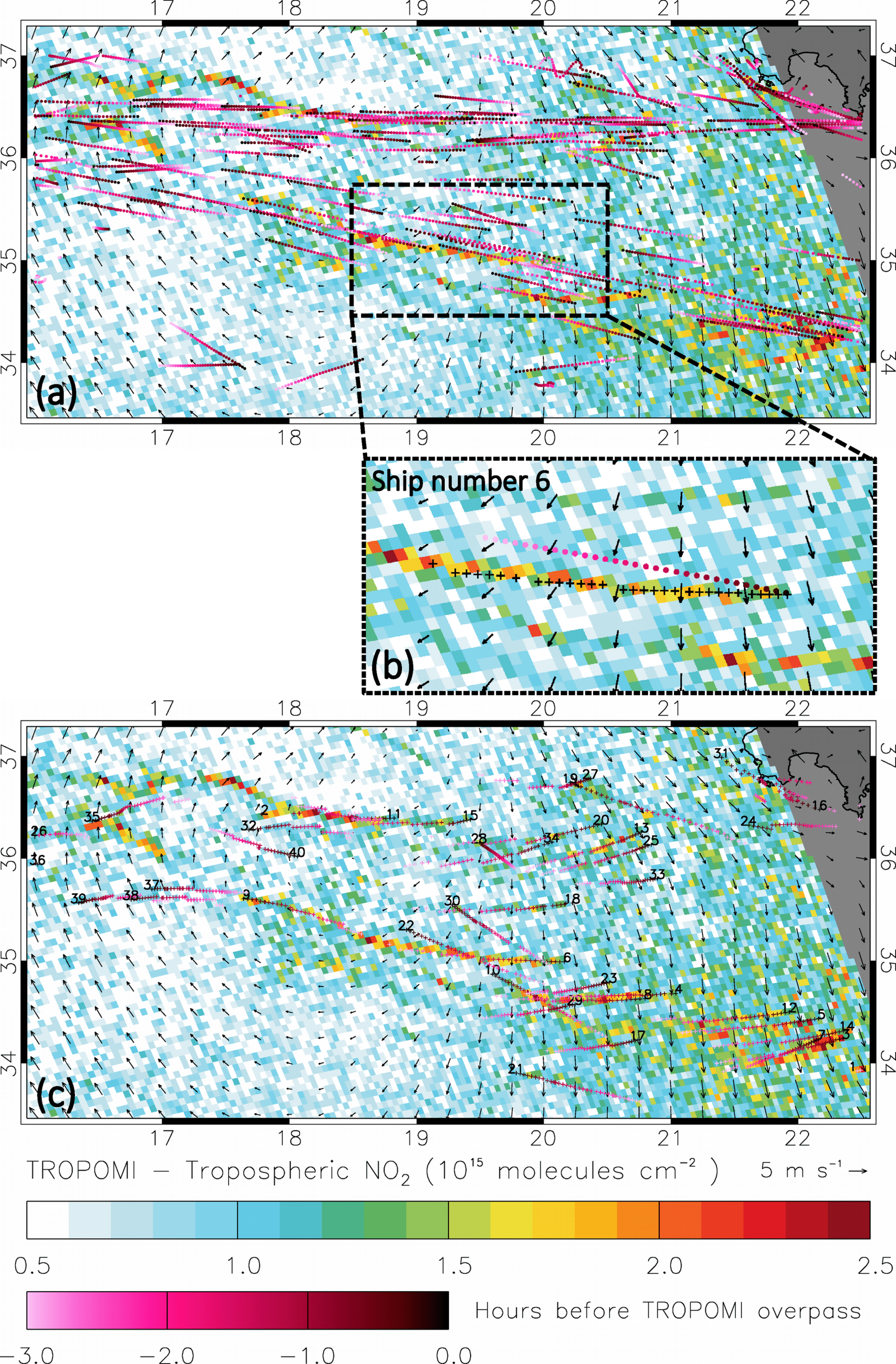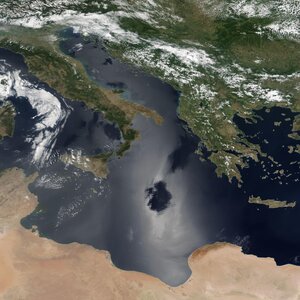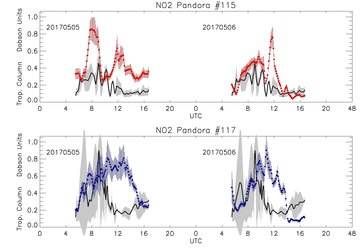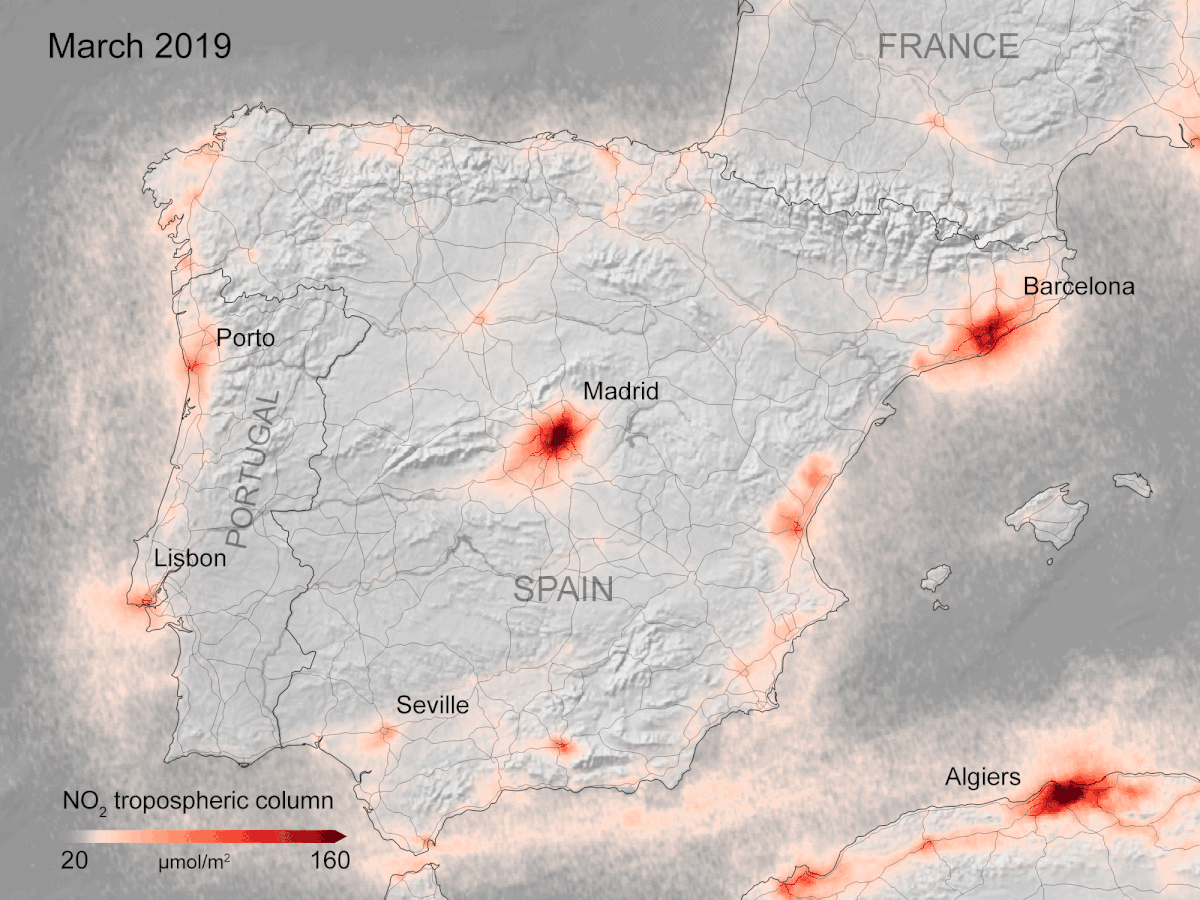

Nitrogen dioxide concentration patterns under sun glint conditions
For the first time, scientists, using data from the Copernicus Sentinel-5P satellite, are now able to detect nitrogen dioxide plumes from individual ships from space.
The image shows the nitrogen dioxide patterns under sun glint viewing conditions, as well as 10-metre wind fields from the ECMWF operational model analyses, and AIS ship locations from the last three hours before, and up to, Sentinel-5P's overpass time. Dark magenta colours are used for the ship positions close to the satellite's overpass time and brighter magenta colours for earlier ship positions.
Image B is an example of the original AIS locations (dots) and the wind-shifted plume locations (crosses) of a ship (Ship 6) at the time of TROPOMI's overpass. Image C is the same as Image A but for the projected wind-shifted plume locations of the 40 ships with a length larger than 200 m. The ships are numbered according to their nitrogen dioxide levels. Dark magenta colours are used for ship plumes emitted close to the satellite's overpass time and brighter magenta colours for earlier ship plumes.
Read full story: Detecting pollution from individual ships from space





